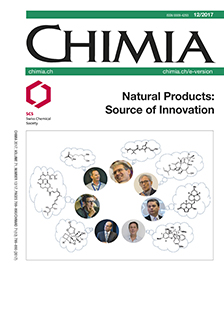Sustainable Chemistry: From Wine Industry Waste (Wine Lees) to Luminescent Ink-jet Inks Containing Carbon Dots
FH-HES Universities of Applied Sciences
DOI:
https://doi.org/10.2533/chimia.2017.864Keywords:
Carbon nanodots, Luminescent material, Sustainable chemistryAbstract
Carbon nanodots can be obtained in good yields by direct combustion of an abundant waste from the wine industry, wine lees. The extraction of these nanoparticles followed by their chemical functionalization lead to an ink-jettable material emitting in the visible region (blue) under specific UV irradiation.Downloads
Published
2017-12-01
Issue
Section
Columns, Conference Reports
Categories
License
Copyright (c) 2017 Swiss Chemical Society

This work is licensed under a Creative Commons Attribution-NonCommercial 4.0 International License.
How to Cite
[1]
Chimia 2017, 71, 864, DOI: 10.2533/chimia.2017.864.







